Die Altstadt von Havanna zählt mit seinen imposanten Festungsanlagen und einer Vielzahl an Kolonialbauten aus den letzten vier Jahrhunderten eindeutig zu den weltweit interessantesten Altstadtvierteln.
Stundenlang kann man in Havanna durch die typisch karibischen Gässchen flanieren, einen Mojito in einer der zahlreichen Bars zu sich nehmen, in den Museen etwas über die kubanische Geschichte lernen, am Bücher- oder Kunstgewerbemarkt zuschlagen oder zwischen den weitläufigen Plätzen und gemütlichen Shops noch versteckte Ecken entdecken.
Natürlich hat das pulsierende Havanna einen Platz auf unserer Liste der Top 10 Sehenswürdigkeiten von Kuba verdient und gehört auch zu unseren Top 10 Sehenswürdigkeiten der Karibik. Seit 1982 zählen das historische Zentrum von Havanna und seine Festungen zum Weltkulturerbe der UNESCO.
Alle sehenswerten Bauten der Altstadt zu beschreiben, würde hier zu weit führen, deshalb hier nur die absoluten Top 10 Sehenswürdigkeiten von Havanna.
Inhaltsverzeichnis
Plaza de Armas

Der Plaza de Armas ist der älteste Platz der Stadt und bester Ausgangspunkt für Sightseeing in Havannas Altstadt. Flankiert wird er von prächtigen Bauten, darunter dem ehemaligen Gouverneurspalast und der ältesten Festung des amerikanischen Kontinents.
Am Plaza de Armas (übersetzt „Platz der Waffen“) findet noch heute ein bei Besuchern beliebtes Schauspiel statt. Wie im 16. Jahrhundert finden hier noch heute militärische Zeremonien mit uniformierten Soldaten statt. Wer sich davon nicht angezogen fühlt, findet vielleicht den täglichen Büchermarkt interessant, auf dem in erster Linie Schriften über Fidel Castro, Che Guevara und Romane von Ernest Hemingway erstanden werden können.
Castillo de la Real Fuerza

Das Castillo de la Real Fuerza gleich gegenüber des Plaza de Armas war 1558 die erste Festung in der Altstadt von Havanna, die nach dem Überfall durch den Korsaren Jaques de Sores wieder errichtet wurde. Sie gilt heute als älteste steinerne Festung des amerikanischen Kontinents. Die spanische Krone schickte damals den Baumeister und 14 offizielle Steinmetze, um den Bau zu überwachen.
Heute beherbergt das Castillo de la Real Fuerza das maritime Museum von Havanna. Die Ausstellungsstücke reichen von der präkolumbianischen Zeit bis zum 18. Jahrhundert. Damals zählten die Werften von Havanna zu den größten der Welt, nahezu 200 Schiffe liefen für die Spanische Krone vom Stapel. Zu sehen gibt es Schiffe, Navigationsinstrumente, Gold- und Silberschätze aus der Kolonialzeit und archäologische Funde aus dem Meer.
Castillo de los Tres Reyes del Morro und San Salvador de la Punta
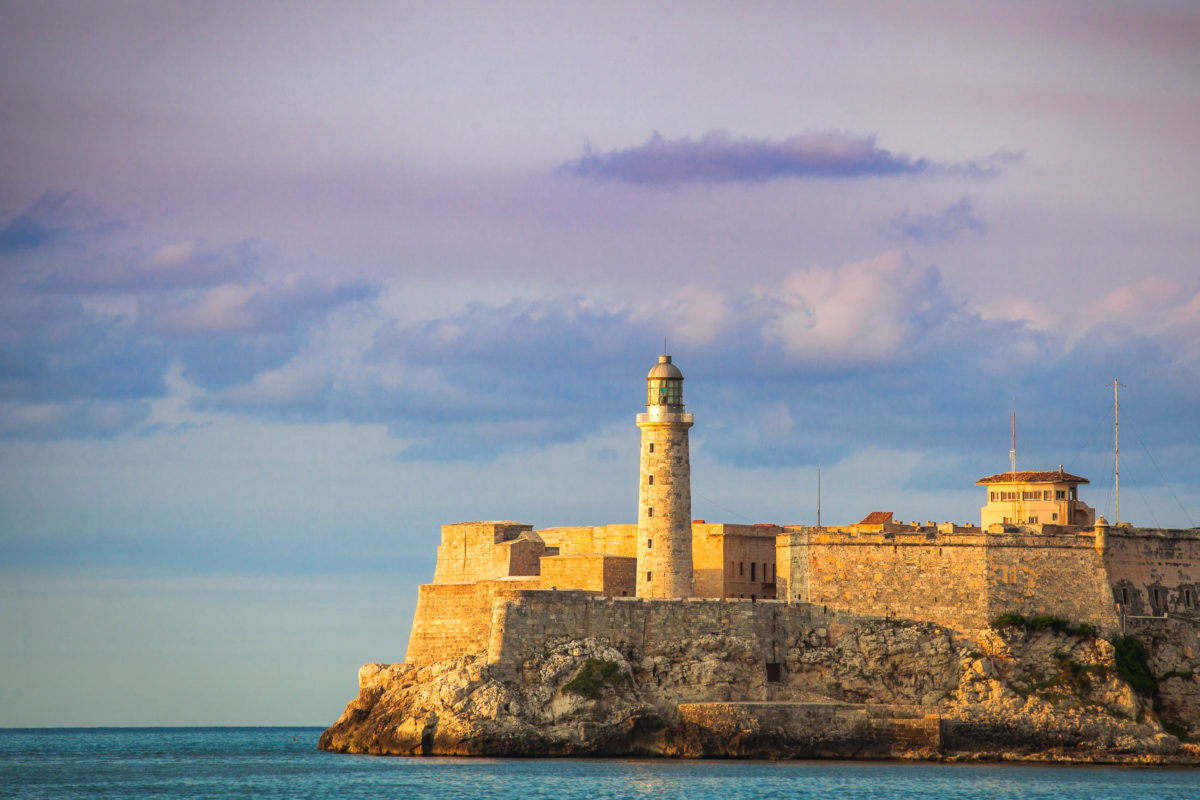
Das Castillo de los Tres Reyes del Morro bewacht den Eingang zur Bucht. Der Bau wurde aufgrund der Gefahr durch den berühmt-berüchtigten Piraten Sir Francis Drake veranlasst und auf dem Felsen „El Morro“ errichtet – nicht zu verwechseln mit dem Castillo del Morro, etwa 10km südwestlich der kubanischen Stadt Santiago de Cuba.
Ihm gegenüber befindet sich die Burg San Salvador de la Punta. Sie liegt am Beginn des Malecón, einer Uferstraße, die entlang der Küste direkt in die Altstadt Havannas führt. Um in der Nacht die Bucht noch besser vor dem Eindringen von Piraten zu schützen, war bis zum Castillo de los Tres Reyes del Morro eine dicke Eisenkette gespannt.
Fortaleza La Cabaña
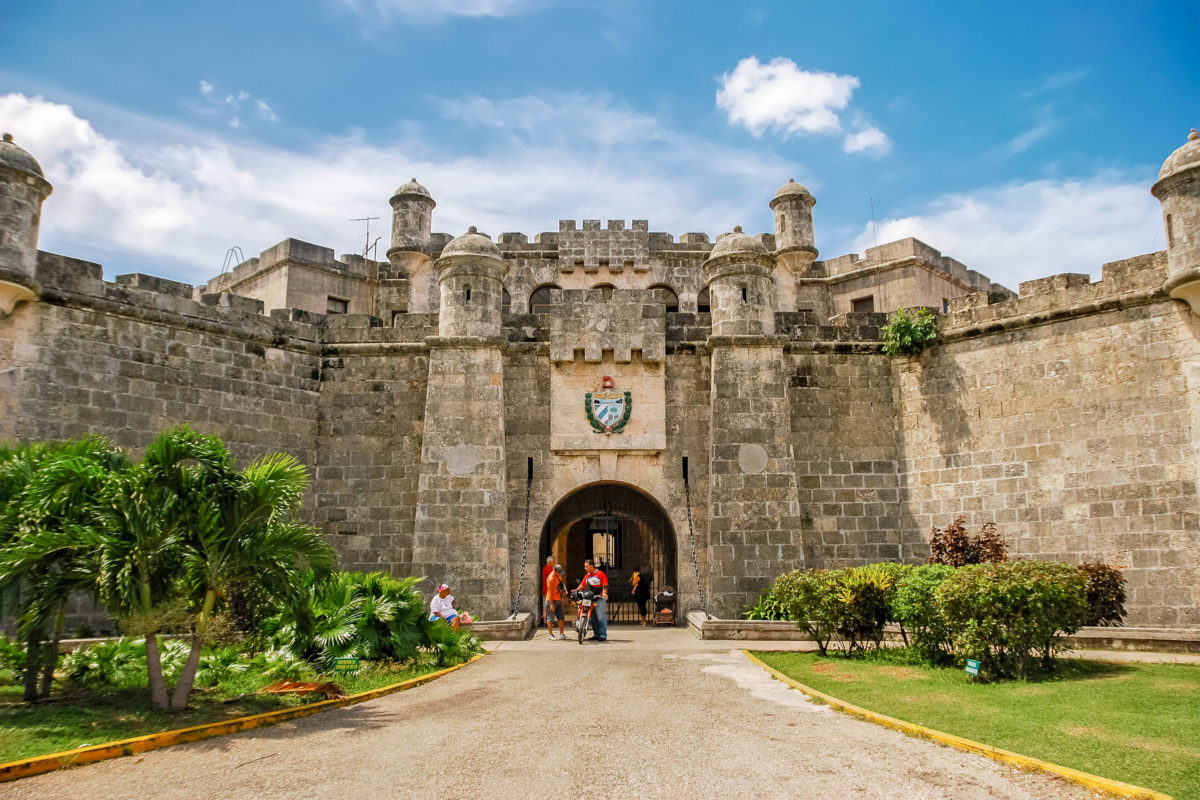
Die Festung La Cabaña im Osten der Bucht schließt direkt an das Castillo del Moro an und ist wohl die beeindruckendste Befestigungsanlage der spanischen Krone. Die 10 Hektar große Anlage entstand von 1763 bis 1774 und gilt als das größte spanische Festung auf dem amerikanischen Kontinent.
Abgesehen von der schieren Größe von La Cabaña (wörtlich „Die Hütte“) gehören die Festungskirche, Atomraketen aus der Kuba-Krise, das Festungsmuseum, das Waffenmuseum und das Büro von Che Guevara inklusive einige seiner persönlichen Gegenstände zu den Sehenswürdigkeiten des imposanten Forts.
Koloniale Tradition: Bis heute (nur im Zweiten Weltkrieg unterbrochen) werden jeden Abend um 9 Uhr durch uniformierte Soldaten zeremonielle Kanonenschüsse abgegeben – sie erinnern an das damalige Schließen der Stadttore für die Nacht.
Palacio De Los Capitanes Generales

Im 1792 fertiggestellten Palacio de los Capitanes Generales auf der Ostseite des Plaza de Armas residierten einst die Gouverneure von Kuba. Von 1902 bis 1920 diente es auch als Präsidenten-Palast, danach beherbergte es die Stadtregierung, bevor es 1968 als Museum der Öffentlichkeit zugänglich gemacht wurde.
Bis heute beherbergt der prächtige Barock-Bau das Stadtmuseum und informiert über die turbulente Geschichte von Havanna und der gesamten Karibik-Insel. Neben Kunstausstellungen präsentiert der Gouverneurspalast seine wunderbaren Räumlichkeiten mit Einrichtungsgegenständen, die zum Teil noch original aus der Kolonialzeit stammen.
Revolutionsmuseum

Das Revolutionsmuseum im einstigen Präsidentenpalast beherbergt die größte und wohl auch interessanteste Ausstellung von Havanna. Auf drei Stockwerken informieren rund 9000 Exponate über die kubanische Geschichte – mit Fokus auf die kubanische Revolution.
Am Vorplatz des Revolutionsmuseum kann die Yacht „Granma“ besichtigt werden, jenes Schiff, mit dem Fidel Castro und seine Männer im Dezember 1956 von Mexiko nach Kuba übersetzten, um die Batista-Diktatur zu stürzen. Damals ging er im Südosten von Kuba, dem heutigen Nationalpark Desembarco del Granma, an Land. Im Erdgeschoß an der Treppe des Revolutionsmuseums sind sogar noch die Einschusslöcher sichtbar.
Kathedrale San Cristóbal
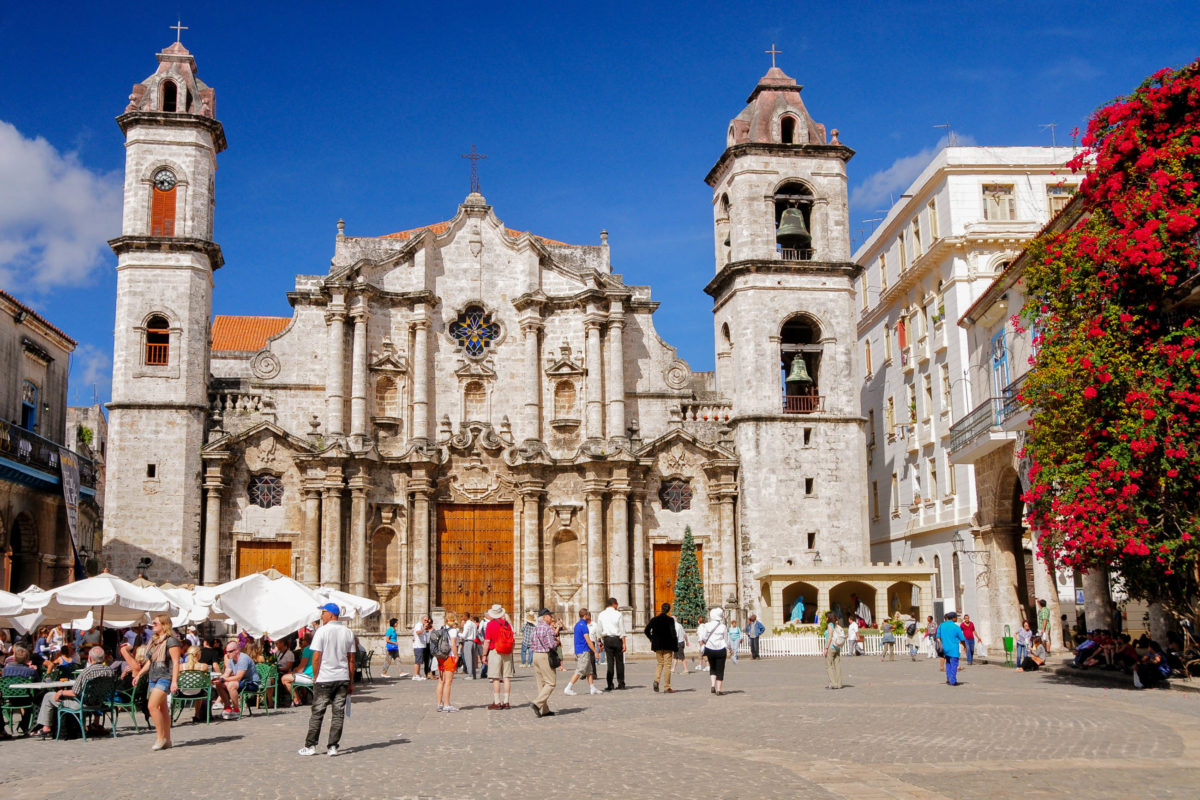
Die imposante Kathedrale San Cristóbal ist kaum zu übersehen. Sie stammt aus dem mittleren 18. Jahrhundert und ist damit eine der ältesten Kirchen des amerikanischen Kontinents. Schon von weitem zieht sie mit ihren beiden asymmetrischen Türmen und der kunstvoll verzierten Fassade alle Blicke auf sich. Auch sie zählt zum UNESCO Weltkulturerbe.
Im Gegensatz zu den kunstvollen Details an den Türmen und den Außenmauern ist das Innere eher karg eingerichtet. Auf dem Platz davor spielt sich das kubanische Leben ab, vor allem Sonntag Vormittags, wenn die Messe abgehalten wird.
Capitolio Nacional
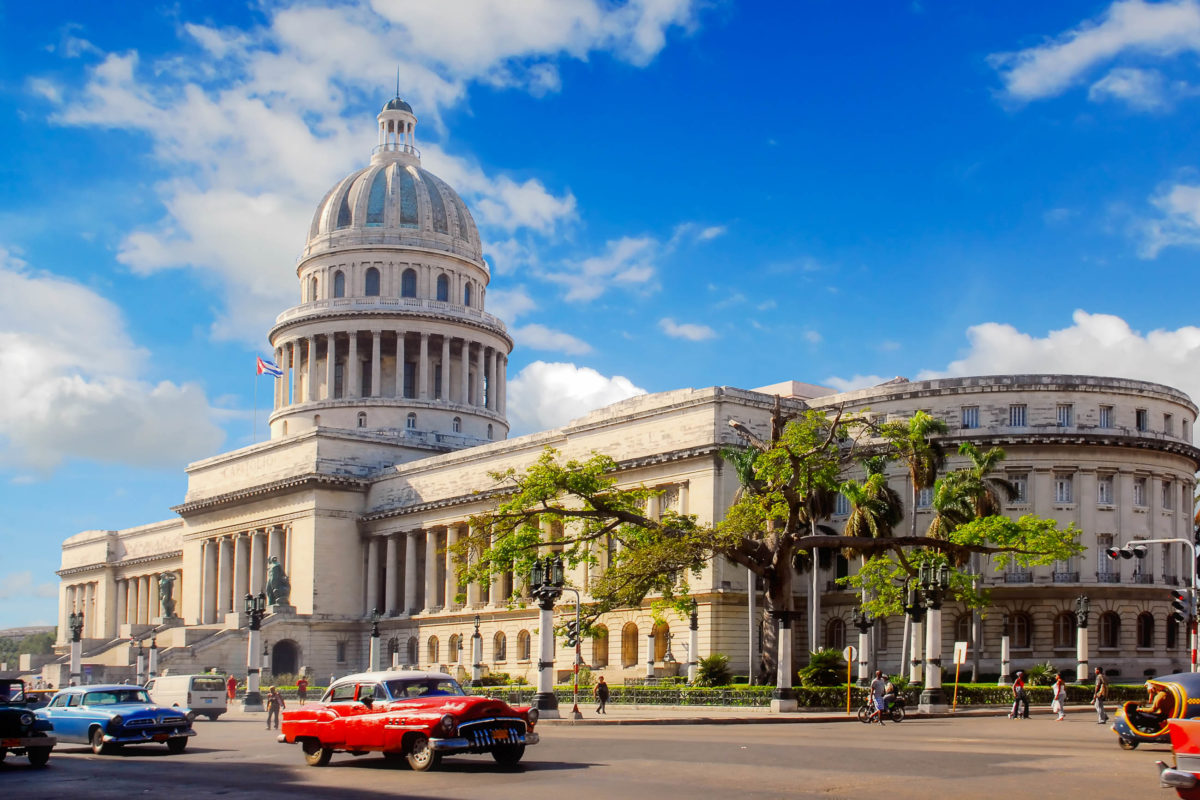
Ebenfalls ins Auge springt das Capitolio Nacional, ein an die hundert Meter hoher Kuppelbau, der dem Kapitol in Washington D.C. nachempfunden wurde. Unübersehbar dominiert das Kapitol die Skyline der Stadt und zählt zu den eindrucksvollsten Gebäuden des vorrevolutionären Kuba.
In seinem Inneren findet man mit der Estatua de la Republica die drittgrößte Indoor-Skulptur der Welt. Die weibliche Bronzestatue symbolisiert den kubanischen Nationalismus. In der Eingangshalle ist der 25-karätige „Stern von Kuba“ ausgestellt, der ursprünglich den Kilometer Null in Kuba markierte – allerdings aus Sicherheitsgründen nur als Replikat.
La Tropicana
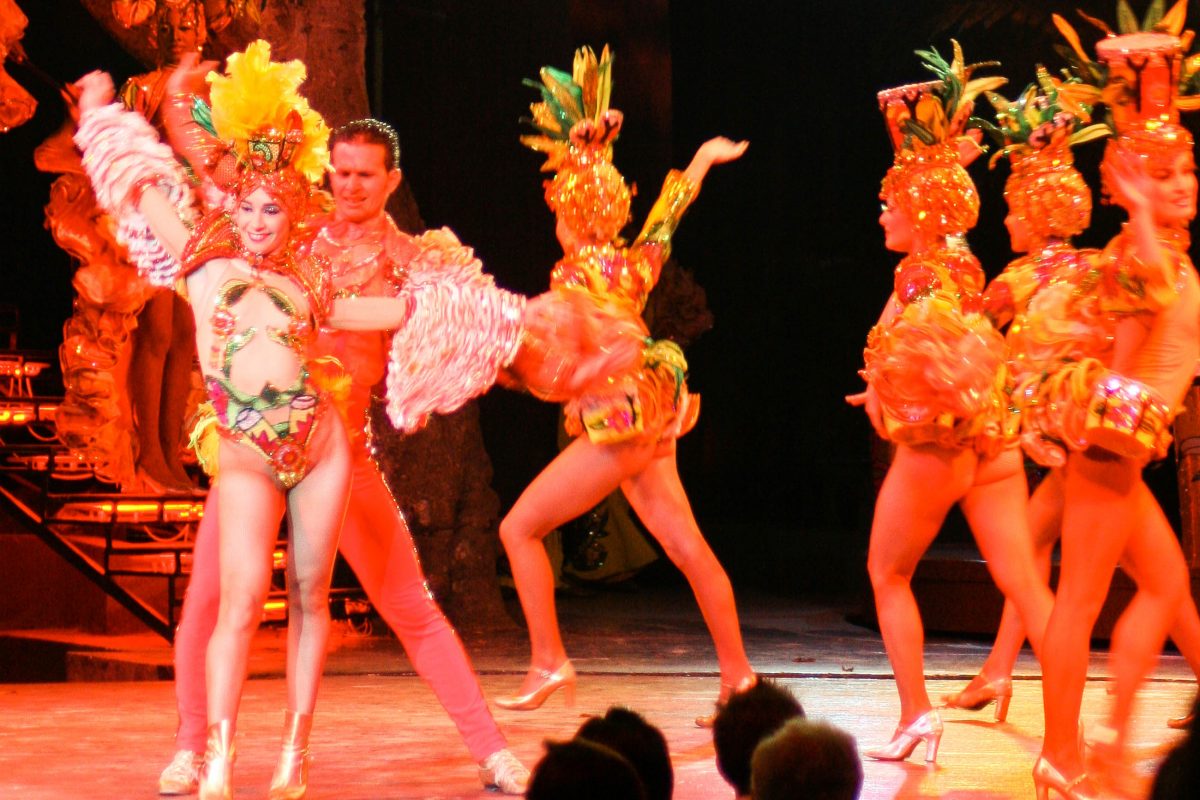
Mit 24.000m² Fläche ist La Tropicana der größte Nachtclub der Welt. Conga-Musik und Salsa-Tänze mit rund 200 Darstellern bieten seinen Besuchern ein atemberaubendes Unterhaltungsprogramm zu 3-Gänge-Menü, Drinks und Zigarren.
Zahlreiche prominente Besucher haben die aufwändigen Shows bereits genossen, darunter Ernest Hemingway, Marlon Brando oder Edith Piaf. Die Darbietungen sind hochpreisig, dafür aber spektakulär und leben von atemberaubenden Kostüm-, Farb- und Licht-Shows.
Nach der Vorstellung wird die Bühne zur Tanzfläche umfunktioniert und ab sofort liegt es an den Gästen den Nachtclub zu rocken – bis in die frühen Morgenstunden!
Museo del Ron (Rum Museum)
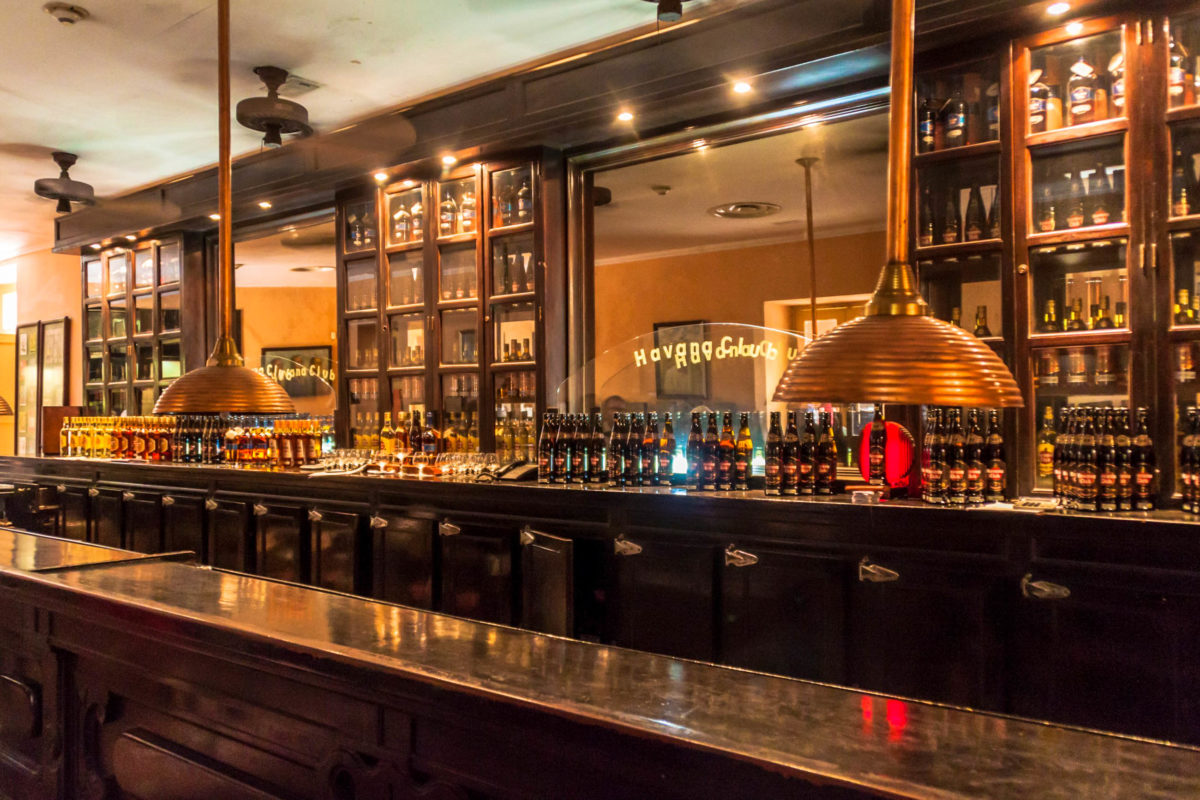
Das Rum-Museum von Havanna wurde in einem eleganten Kolonialhaus aus dem 18. Jahrhundert eingerichtet. Es berichtet über eine der erfolgreichsten Export-Geschichten Kubas: den berühmten Rum „Havana Club“.
Der gesamte Entstehungsprozess des Rums kann im Museo del Ron nachvollzogen werden. Zu sehen gibt es die hölzernen Gärfässer, die kupfernen Destillationskessel und die Reife-Fässer, in denen der Havana Club Rum seinen exquisiten Geschmack erhält. Am Schluss der Tour steht natürlich eine Verkostung mit Shop – für das wohl schmackhafteste Kuba-Souvenir überhaupt.
BILDER: Altstadt von Havanna
Fotogalerie: Altstadt von Havanna
Geschichte von Havanna

Havanna wurde 1519 durch die Spanier als Warenumschlagplatz zwischen der Neuen Welt und der Alten Welt gegründet. Der bunte Mix aus indianischer, afrikanischer und spanischer Kultur in der Handelsmetropole zwischen Europa und Mittelamerika ist heute noch deutlich zu sehen.
Nachdem der Korsare Jaques de Sores Havanna eroberte und die erhofften Reichtümer nicht fand, brannte er die Stadt bis auf ihre Grundmauern nieder. Dies war Havanna eine Lehre und die Stadt wurde durch Forts und Mauern zum Schutz vor Piraten befestigt. Die damals errichteten Stadtmauern begrenzen heute die Altstadt Havannas, in der Landessprache „La Habana Vieja“ (das alte Havanna) genannt.
Prachtvolle Kolonialbauten im Stil des Barock und Neoklassizismus aus den letzten vier Jahrhunderten, großartige Paläste und mächtige Festungsanlagen versetzen den Besucher in die Zeit der Kolonialherrschaft Kubas zurück. Einige der ehrwürdigen Bauten gehören zu den ältesten spanischen Kolonialsiedlungen in Mittelamerika.
In den ersten Jahren der kubanischen Revolution in den 1950er Jahren wurden leider mehrere Gebäude beschädigt oder stürzten in Folge ein, ihre Restaurierung wird jedoch seit 1993 durch internationale Spendengelder und teilweise auch von der UNESCO unterstützt.





